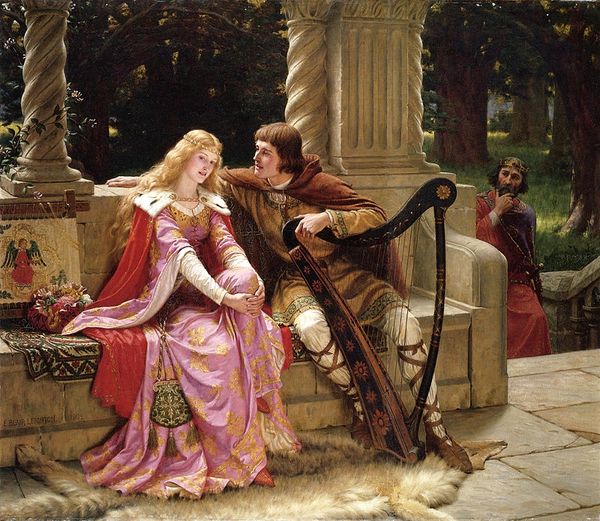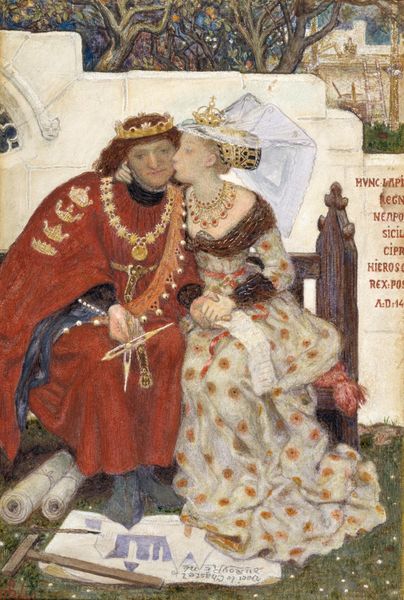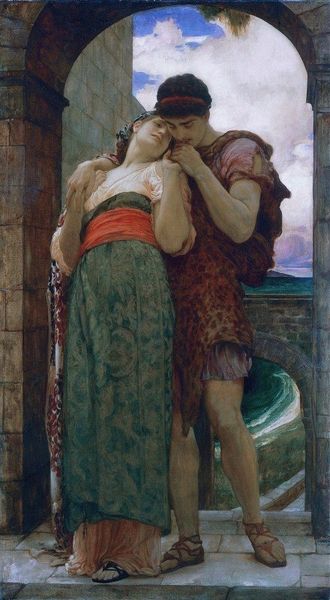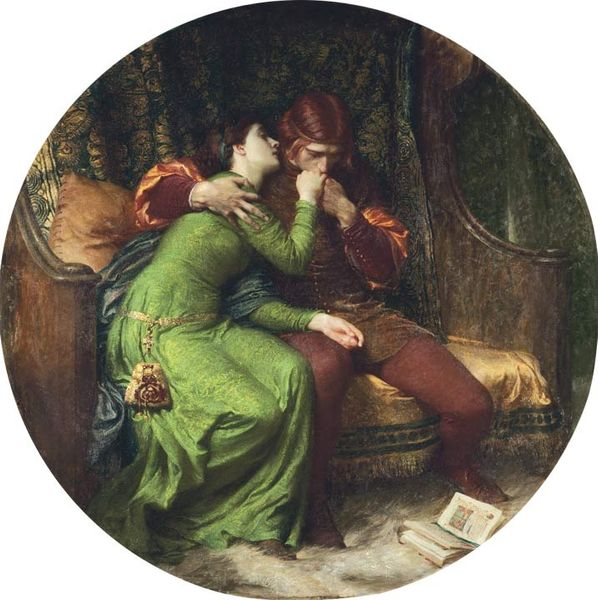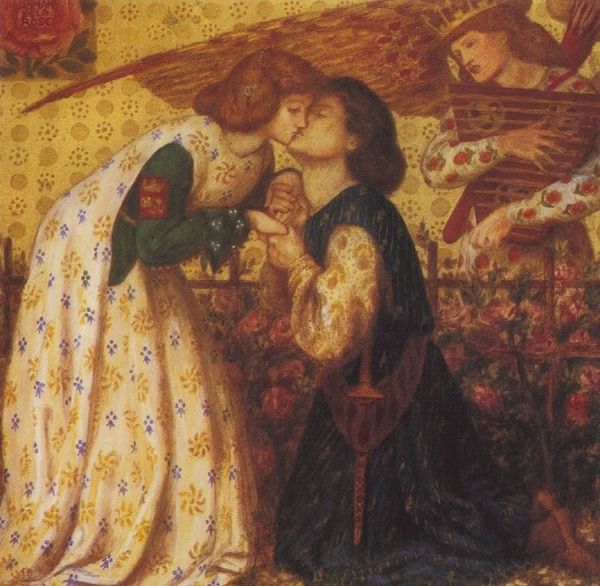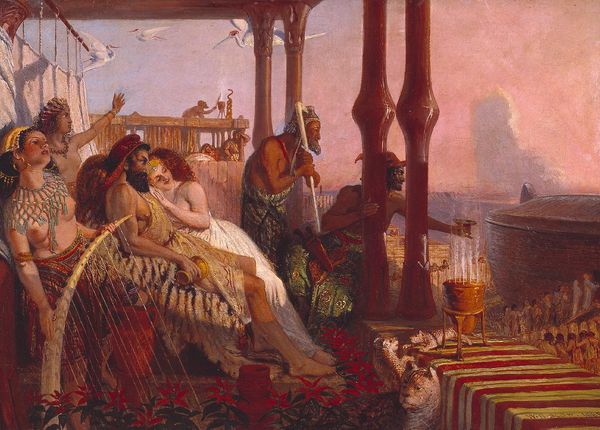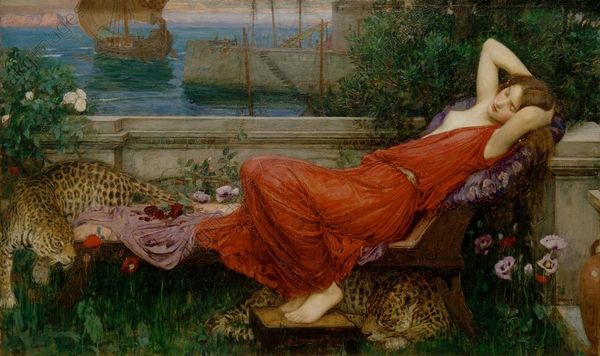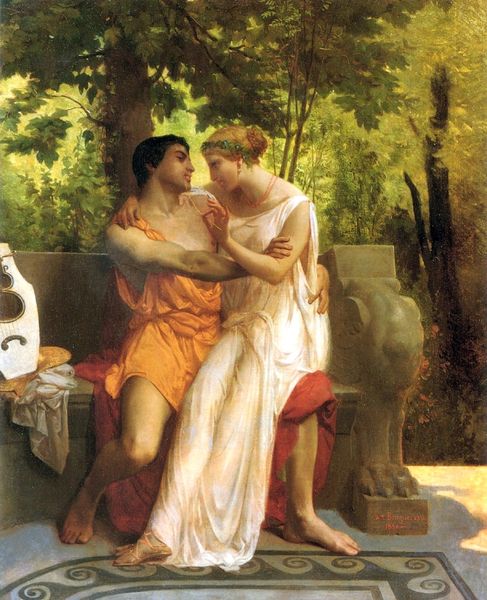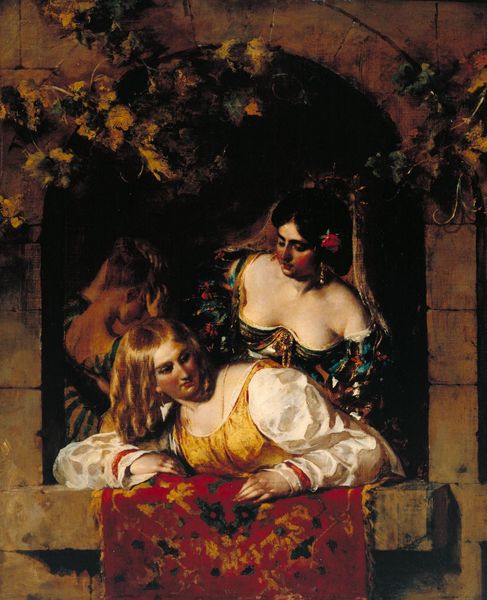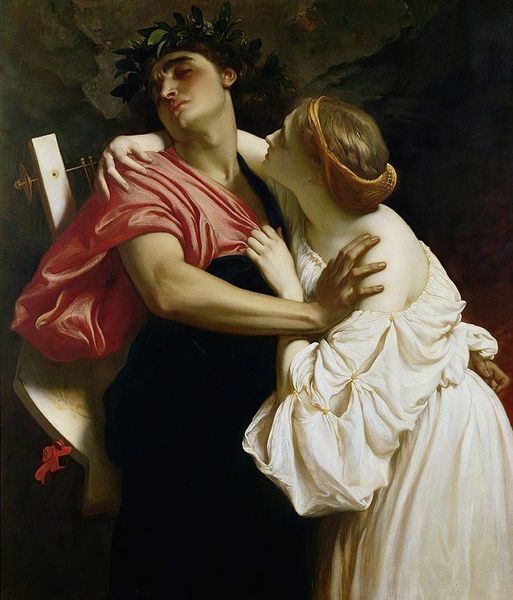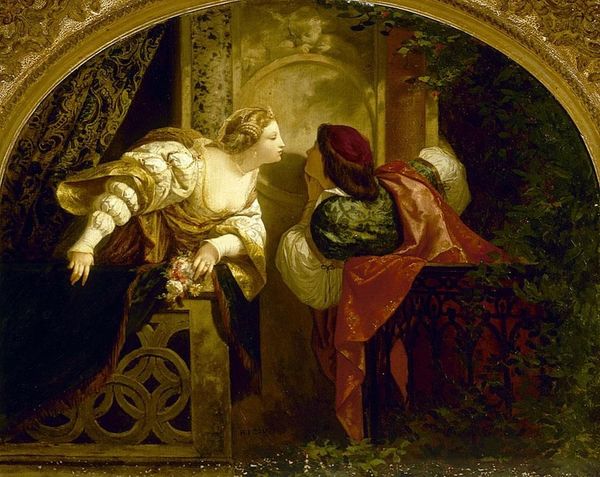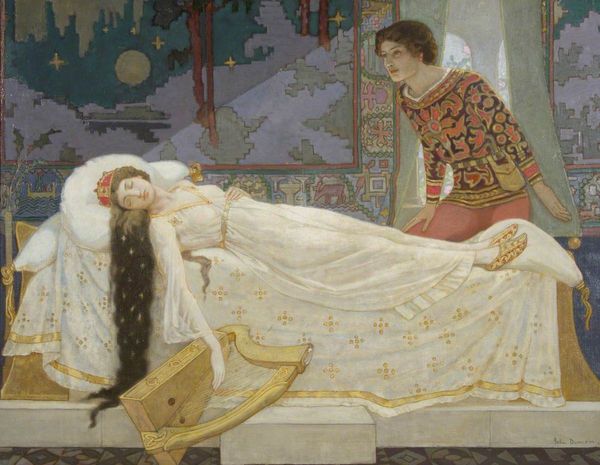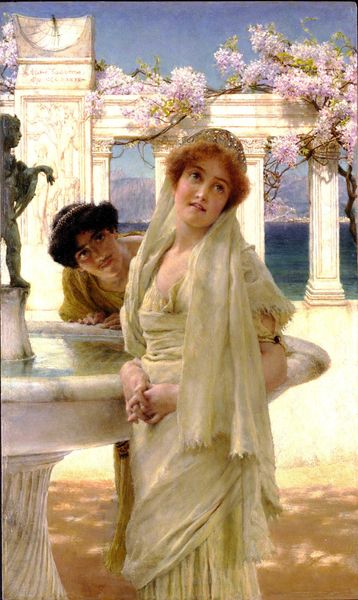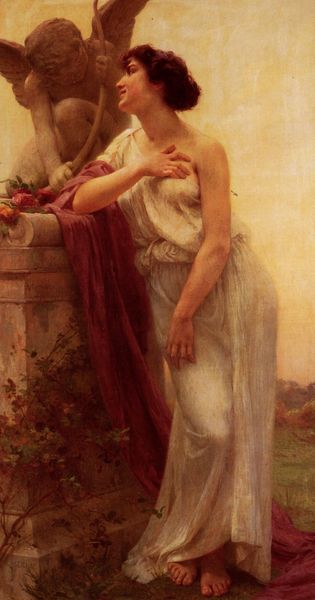
Dimensions: 24.5 x 32.1 cm
Copyright: Public domain
Editor: Here we have Ford Madox Brown's "Romeo and Juliet," painted in 1871, using oil on canvas. What strikes me most is how staged it feels, almost like a tableau vivant. It’s very romantic, of course, but also feels deliberately performative. What are your thoughts on this work? Curator: Indeed, it's important to understand the context of the Pre-Raphaelite Brotherhood to fully appreciate this piece. The Brotherhood was highly interested in portraying historical scenes with moral undertones. While outwardly romantic, this scene, like much Pre-Raphaelite work, has something to say about society. Note how the architectural detail and clothing attempt historical accuracy. This emphasis points towards Victorian society’s growing fascination with history and its use to reflect on their contemporary morals. What does the specific portrayal of Romeo and Juliet signal, do you think? Editor: Well, Romeo extending his arm like that, ready to leave... Perhaps it’s commenting on impulsive youth and societal pressures forcing lovers apart. It feels…critical of the family feud, almost as a mirror to Victorian social class divisions. Curator: Precisely! The painting isn’t merely illustrating Shakespeare; it’s actively commenting on Victorian social structures through the lens of this iconic, tragic love story. The "performance," as you called it, heightens the didactic function that art served in public life at this time. It almost theatricalizes this conflict so that audiences of the time would engage with its critique of class and tradition. Did it challenge norms or did it reinforce accepted morality, however? That's the lingering question. Editor: It’s fascinating how much historical context informs the interpretation! Thanks to the pre-Raphaelites, I’m going to start considering social issues even when looking at love stories in paintings! Curator: It's important to remember the Pre-Raphaelites saw art as more than just aesthetics; they hoped for it to perform a civic function, as part of the great issues concerning the morality of its time.
Comments
No comments
Be the first to comment and join the conversation on the ultimate creative platform.
